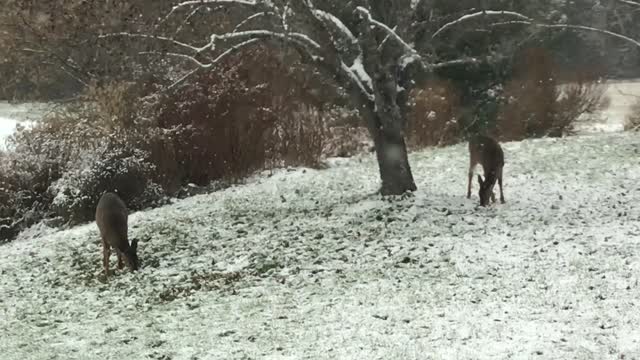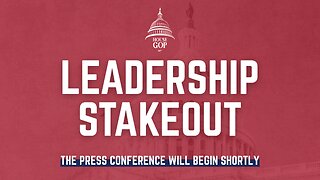Premium Only Content

Baby deer & mom frolic in first snow of the season
Such a beautiful sight to wake up to. This mom and 2 small fawns stopped out on my back property to feed on the apples and berries.
Here in New Hampshire, the white-tailed deer population is approximately 100,000 individuals. The areas of greatest densities are in the southern counties (Rockingham, Hillsborough, and Cheshire) and along the Connecticut River Valley (Grafton County). In 2014, the NH Fish and Game Department began the process of revising its 10-year management plan for white-tailed deer, moose, turkey, black bear, snowshoe hare, and ruffed grouse.
This document, called the NH Game Management Plan, spans the period of 2016 to 2025. Population level goals for deer were adjusted to more closely reflect current biological conditions and limitation, as well as public interests and concerns. These goals aim to stabilize the deer population in many areas of the state while increasing or reducing it in others.
Habits and Habitats
White-tailed deer can live in a variety of habitats, including farmlands, brushy areas, woods, mountains, and suburbs and gardens. They feed on green plants, including aquatic species in the summer, acorns, beechnuts, and corn in the fall, and woody vegetation, including buds and twigs of birch, maple and conifers in the winter. White-tailed deer will typically consume 5 to 9 pounds of food each day and find water from snow, dew and waterbodies.
Individual deer group into two types of social combinations. These include the family group, with a doe and her young, and the buck group. The family group will stay together for approximately a year. Buck groups are structured with a dominance hierarchy of 3 to 5 individuals. Bucks will challenge each other with stares, lowered ears, kicking, sparring (physically pushing each other back), and less commonly, thrashing of forefeet.
During the winter, these two deer groups may come together, forming communities of up to 150 individuals in locations called “yards.” This unification keeps trails open and accessible for feeding and also provides protection from predators. However, there have been problems with humans providing supplementary feed sites for deer in the winter. These sites can cause unnaturally high densities of congregated deer that attract predators, increase the risk of disease transmission, increase aggression within the community, and lead to over-browsing of local vegetation and more deer-vehicle collisions. They cause deer to be more dependent on humans and artificial food sources that provide few benefits.
-
 UPCOMING
UPCOMING
Grant Stinchfield
40 minutes agoShock Move: Trump Shakes MAGA Nation as he Rolls Up His Sleeve for the New COVID Booster!
-
 31:13
31:13
Rethinking the Dollar
39 minutes agoBessent Buys Pesos & Trump Hints At "New Note" | RTD News Update
-
 1:00:30
1:00:30
VINCE
3 hours agoThe Shutdown Is Even Worse Than You Thought | Episode 146 - 10/14/25
142K77 -
 1:36:43
1:36:43
Dear America
3 hours agoMSM In PANIC Over New Pentagon Rules!! | Biden And Clinton Thank Trump For Peace In Middle East!!
89K34 -
 LIVE
LIVE
Badlands Media
8 hours agoBadlands Daily: October 14, 2025
4,089 watching -
 43:06
43:06
House Republicans
2 hours agoHouse Republicans Leadership Stakeout
9K3 -
 16:25
16:25
marcushouse
4 hours ago $1.29 earnedSpaceX Starship Flight 11 Launch EXPLAINED! 🚀🔥
15K10 -
 1:03:54
1:03:54
Chad Prather
17 hours agoThe Gospel That Can’t Save You: Exposing the Lie of Self-Help Christianity
56.5K29 -
 30:40
30:40
Tucker Carlson
15 hours agoThe 9/11 Files: From Cover-up to Conspiracy | Ep 4
86.5K66 -
 1:57:37
1:57:37
The Chris Salcedo Show
15 hours ago $6.12 earnedAfter What They've Done, Mockery Is The Best They Deserve
40.6K2